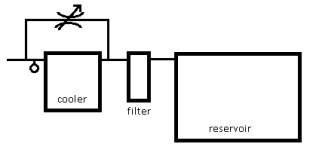Sawyer Rob
Super Member
I'm wondering if you have restrictive points that are creating more heat than they would if the oil was more free flowing... 90's and smaller capacity valves ect.., create a lot more heat that you have to get rid of...
My splitter it powered with a 30hp diesel, 20 gallon pump and a 15 gallon tank that I don't even have full, and I NEVER even come close to having heat problems!
SR
My splitter it powered with a 30hp diesel, 20 gallon pump and a 15 gallon tank that I don't even have full, and I NEVER even come close to having heat problems!
SR

